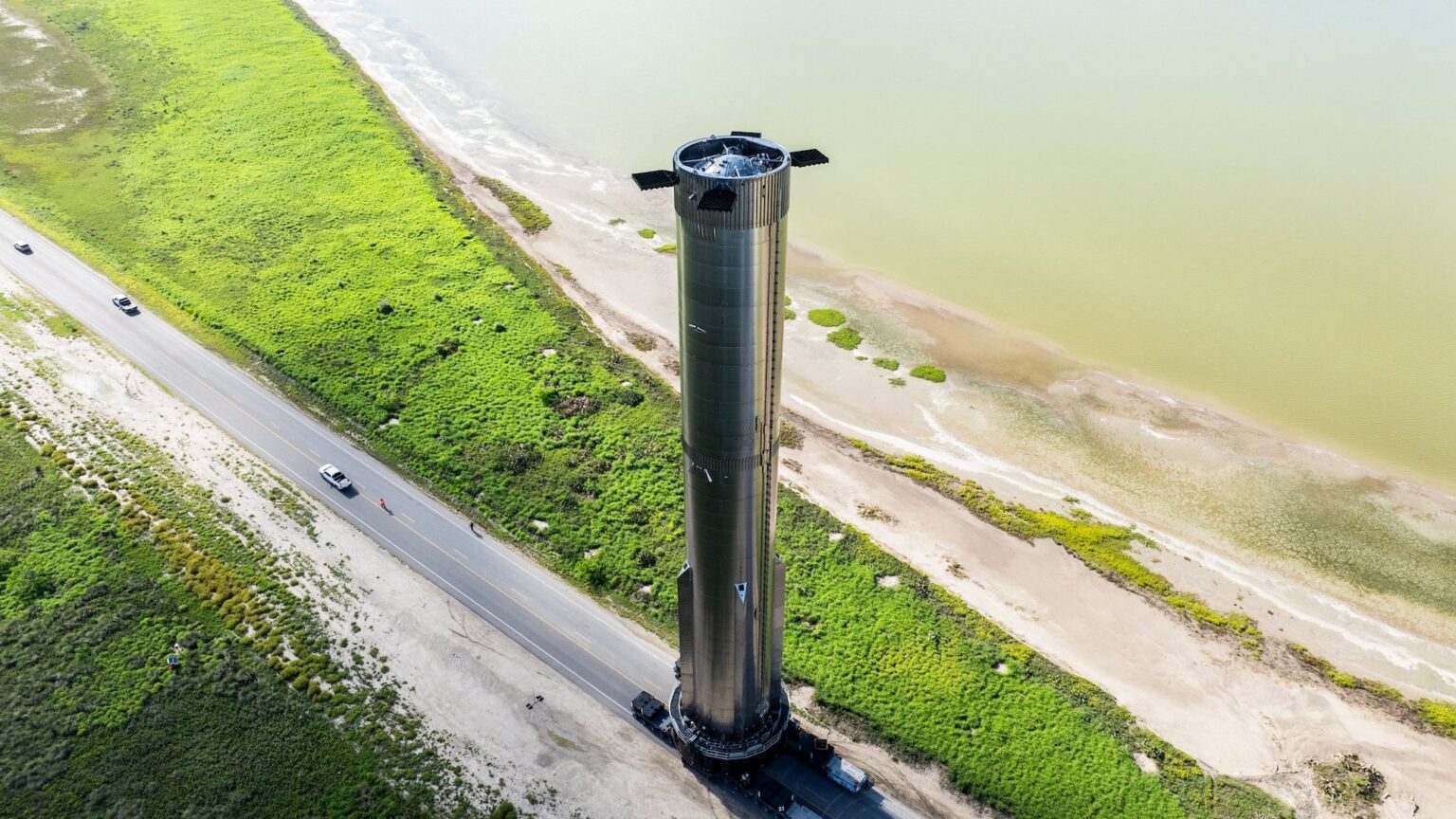SpaceX has published photos of a Super Heavy launch vehicle being transported to the launch pad in Boca Chica, Texas, in preparation for the fifth Starship test flight scheduled for the first half of August. The next step will be to install the Starship spacecraft on the first stage of the Super Heavy launch vehicle. These two parts together are called Starship.

With a liftoff thrust of 7.7 tons, the 120-meter-long Starship is the largest and most powerful rocket ever to take to the skies. It has more thrust than NASA’s Space Launch System (SLS) rocket, which has only flown once, and is twice as powerful as the legendary Saturn V that carried astronauts to the Moon during the Apollo missions.
Once fully tested and licensed, Starship will likely be used to transport crew and cargo to the Moon. It could also become the first spacecraft to deliver humans to Mars, although much work remains to be done.
The Starship was first launched in 2023 during a test flight that lasted several minutes before an anomaly forced the rocket to be destroyed in midair. The second flight lasted a little longer and achieved stage separation, but also ended unsuccessfully. The two subsequent tests, the last of which took place last month, were much more successful: the Super Heavy rocket completed its mission and landed in the Gulf of Mexico, and Starship entered orbit.
During the fifth test flight, the SpaceX team will try to use mechanical manipulators on the launch tower to “catch” the first stage booster during its landing. Returning the Super Heavy in this way will allow SpaceX to reuse the launch vehicle for multiple missions, which will reduce costs. Although there are no guarantees that the maneuver will be successful on the first attempt, given SpaceX’s success with the landing and reuse of Falcon 9, there is a high probability that the team will successfully work out this maneuver.
Earlier, we reported on how a SpaceX rocket was mistaken for the Moon.

